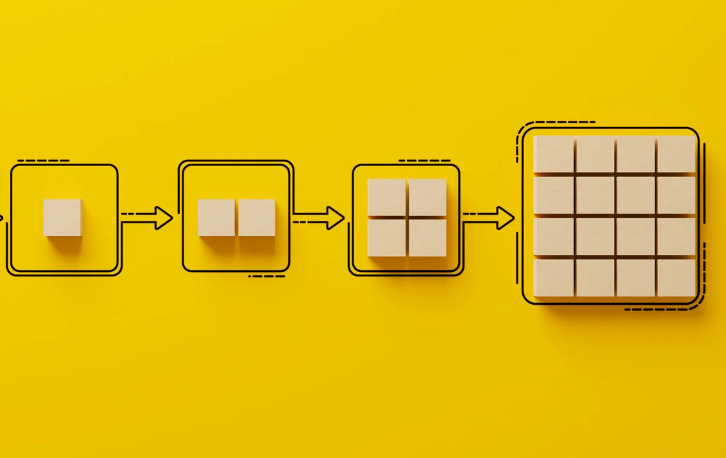How to Sublease an Apartment: 5 Steps for Subletting
Ever considered subletting your apartment? Subletting offers a flexible short-term housing solution, allowing tenants, or sublessors, to rent out
Tired of nonsense pricing of DocuSign?
Start taking digital signatures with BoloSign and save money.
Introduction
Ever considered subletting your apartment? Subletting offers a flexible short-term housing solution, allowing tenants, or sublessors, to rent out their space temporarily to another individual, known as a subtenant. This guide simplifies the subletting process, helping both sublessors and subtenants navigate this arrangement smoothly.
Subleasing an apartment can be a practical solution for renters who need temporary relief from their lease or wish to share their space with another tenant. Whether you're a tenant looking to sublet your apartment or someone seeking a sublet, understanding the process is essential. In this guide, we'll walk you through five key steps for successfully subletting an apartment, ensuring a smooth and legally sound transition for all parties involved.
What Is Subletting?
Subletting allows a subtenant to occupy and pay rent for an apartment leased by another tenant—the sublessor. Although the subtenant pays rent, the sublessor retains all legal responsibilities towards the landlord, including rent and maintenance of the property.
Subletting is a commonly chosen option for students, young professionals, and individuals who have work-related travel commitments.
For instance:
- A graduate student studying abroad for a semester might opt for subletting to cover their rent during their absence.
- A young professional temporarily working in another city may choose a sublease agreement instead of breaking their original lease or paying rent for unused space.
Conversely, if you need short-term housing, you can connect with renters seeking subletters to take over their leases for a specified period.
5 Essential Steps for Subleasing Your Apartment Safely and Legally

Whether you're a tenant needing a temporary housing solution or a landlord considering offering sublet options, it's crucial to understand the legal aspects of subletting. This guide outlines five key steps to ensure your subletting arrangement adheres to legal standards and secures both parties' interests.
Subletting as the Original Tenant
When you sublease as the original tenant, your name is on the lease agreement for the apartment. In a subletting arrangement, you retain responsibility for rent, utilities, and property maintenance. You and the subletter will enter into a separate sublease agreement, independent of the lease between you and the landlord. Here are the steps to follow for renting to a subletter:
Step 1: Confirm That Subleasing Is the Best Choice
Subleasing isn't a passive arrangement. It's crucial to be prepared to address potential issues with your subtenant. This includes handling situations like non-payment or inappropriate behavior, which may even require eviction. If your subtenant fails to pay rent or breaches the contract, you should be ready to cover their rent personally, as your original lease with the landlord is still your responsibility.
Step 2: Examine Your Lease Agreement
Thoroughly review your original lease before proceeding with a sublease. Your lease is a legally binding document involving you, your fellow residents, and your landlord. This means your subletter is also bound by the same rules. Beyond rent, your lease likely contains clauses regarding pets, vehicles, maintenance, and noise regulations. If your subletter doesn't adhere to these terms, you will be held accountable.
Check if your lease includes any specific provisions related to subleasing. Some landlords prohibit subleasing or mandate seeking permission in advance, while others may permit it under specific conditions. Adhere to the subleasing rules as outlined in your lease.
Step 3: Notify Your Landlord
Once you've decided to sublease your apartment, it's essential to inform your landlord. Obtain written permission before proceeding, as a verbal agreement might not safeguard your interests in case of future issues arising from subleasing.
Step 4: Find a Reliable Tenant
Your primary objective is to locate a trustworthy and responsible tenant for the sublease. Begin by:
- Create an informative advertisement that details your apartment's features, availability dates, and contact information.
- Promoting your listing on social media, rental websites (e.g., Craigslist), and local community platforms.
- Leveraging your network of friends and acquaintances to spread the word.
Once you have potential subletters, conduct a thorough screening by verifying their:
- Employment and income stability.
- References.
- Criminal record.
Step 5: Complete the Sublease Agreement
After the groundwork, it's time to finalize the sublease agreement with your chosen subletter. This agreement requires signatures from both the original tenant (you) and the new subletter. Ensure you both agree on essential details, including:
- Monthly rent amount.
- Total rent for the sublease term.
- Accepted payment methods.
- Inclusions like parking, storage, or furniture.
- Sublease duration.
- Late fees.
- Utility payment responsibilities.
- Other critical lease provisions, such as pet policies and smoking rules.
Incorporating all relevant information into the sublease agreement safeguards your rights and clarifies the expectations for the subletter, which can be invaluable if any disputes arise in the future.
Subletting an apartment can be a win-win situation for both parties, provided it's approached thoughtfully and within the bounds of your lease agreement and local laws.
Subletting as a Subtenant: Finding Short-Term Housing
If you're in search of short-term housing, subleasing offers a flexible and popular solution. Follow these steps to navigate the subleasing process as a subtenant:
Step 1: Assess the Property
Start your search by exploring subletting options on various platforms like Craigslist, social media, community flyers, or specialized subletting websites such as Sublet.com and Airbnb. Once you've identified a property that aligns with your needs, visit the place and conduct a thorough assessment of its condition. To protect yourself, consider documenting any existing damage in a rental inspection checklist. This documentation will help ensure you aren't held responsible for issues you didn't cause.
Step 2: Review the Original Lease Terms
As a subtenant, you are bound by both the terms of your sublease agreement and the landlord's original lease. Review all the terms, rules, and provisions to have a clear understanding of your responsibilities as a subtenant.
Step 3: Negotiate Your Sublease Price and Terms
Subleasing is a flexible arrangement that allows you to collaborate with the original tenant to determine a fair monthly rent and reasonable terms. Don't hesitate to discuss any concerns you might have, such as mail forwarding, handling the sublessor's personal property inventory and storage, or the procedures for early termination.
Step 4: Sign a Subleasing Agreement
When you're ready to commit, it's time to formalize the sublease agreement. This legally binding document outlines the terms and conditions of your sublease, covering aspects like rent, utility expenses, and late fees. Carefully read the agreement and don't hesitate to ask questions if anything is unclear before signing.
Step 5: Move In
With the sublease agreement in place, you're officially set to move in. Collect your keys, settle into your new apartment, and start making it your temporary home.
Subletting as a subtenant provides a practical solution for those seeking short-term housing, offering flexibility and opportunities to negotiate terms that align with your needs.
The Legality of Subletting: What You Need to Know
Subletting an apartment is a common practice, but its legality can vary depending on your location and the terms of your lease agreement. Here's what you should consider:
Local Laws and Lease Agreement:
- Subletting is typically allowed in many cities and states, but it's important to be aware of local laws and regulations. In some areas, these laws may grant landlords the right to refuse subletting by tenants.
- To determine the legality of subletting in your area, it's crucial to research and understand your city and state laws. You can usually find this information by contacting your local housing authority or checking government websites.
- Equally important is reviewing your lease agreement. Lease agreements often include clauses related to subletting. Some leases may prohibit subletting altogether, while others may permit it under certain conditions.
- If your lease agreement allows subletting, it's essential to follow the process and requirements outlined in the agreement to ensure that you comply with your lease terms and local laws.
Understanding the legal aspects of subletting is crucial to avoid potential conflicts with your landlord and to protect your rights as a tenant. Always make sure to verify the specific rules and regulations that apply in your location and follow the guidelines provided in your lease agreement.
The Top Choice for Real Estate: BoloForms

When considering subletting your apartment, managing the paperwork efficiently and legally is paramount. This is where BoloForms, a comprehensive digital signature platform, comes into play. Tailored specifically for the real estate sector, BoloForms empowers agents, brokers, property managers, and more to handle their contract workflows with ease and precision.
Key Features of BoloForms:
- Digital Signature Creation: BoloForms allows you to create digital signatures through drawing, typing, or uploading. This flexibility ensures that you can execute documents in a way that suits your style and needs.
- Efficient Document Editing: With an integrated editor, filling out and signing documents digitally cuts down the time spent on manual paperwork.
- Streamlined Document Sharing: Easily distribute documents to all involved parties and initiate signature requests without the hassle of physical document handling.
One standout feature is the availability of pre-made templates, which not only save you valuable time but also provide essential legal protection. These contract templates have undergone thorough scrutiny by legal experts to ensure compliance and reliability. Furthermore, these templates can be effortlessly customized and personalized to suit your specific requirements. Once signed, these contracts are legally binding, offering you the peace of mind and legal security you need in real estate transactions.

Custom Real Estate Templates:
BoloForms includes a variety of pre-designed real estate templates that are crucial for subleasing scenarios:
- Lease Amendment
- Property management agreement
- Month-to-month rental agreement
- Short-Term Rental Agreement
- Sublease agreement
- Late Rent Notice
These templates are designed to ensure compliance and legal integrity, which is critical when altering living arrangements or managing property transitions. They can be customized to meet the specific terms of any deal, providing both legal protection and personalization.
Advanced Security and Compliance:
Security is a non-negotiable aspect of real estate transactions. BoloForms addresses this with robust security measures including firewall protection, data encryption, and a comprehensive legal audit log that maintains a record of all transactions. This ensures that every agreement you sign through BoloForms is secure and legally binding.
Flexibility and Accessibility:
The platform supports remote and mobile signing, allowing parties involved in a sublease or any real estate agreement to sign documents from anywhere at any time. This feature is particularly useful for subletters who are often on the move or might be residing temporarily in different locations.
FAQ
Q: Is subleasing legal in all U.S. states?
While subleasing is generally permitted, the legality and specific rules can vary by state and even by city. Tenants should always check local laws and their original lease agreement, which may require landlord approval before subleasing.
Q: Is subletting legal in Germany?
In Germany, subletting is indeed legal, offering you the opportunity to have a roommate and share rent expenses. However, before subletting your apartment, it's essential to secure permission from your landlord or property manager. This step is crucial to ensure that you comply with the legal requirements for subletting in Germany.
Q: Under which rule subletting is allowed?
In compliance with Rent Control Acts in various Indian states, subletting is typically prohibited unless explicit written consent is obtained from the landlord. This is a common requirement to ensure that subletting adheres to the regulations outlined in the respective acts. For example, under the U.P. Urban Buildings (Regulation of Letting, Rent, and Eviction) Act 1972, often referred to as the U.P.R.C. Act, this consent is necessary to engage in subletting arrangements.
Conclusion
In conclusion, subletting can be a practical solution for both tenants and landlords, offering flexibility and cost-saving opportunities. Whether you're the original tenant or the subtenant, understanding the process and adhering to local laws and lease agreements is essential for a smooth and legally sound subletting experience. By following the steps outlined in this guide and being aware of the legality of subletting in your area, you can navigate this housing arrangement successfully and avoid potential conflicts. Remember, subletting can be a win-win situation when approached thoughtfully and within the bounds of the law.

Paresh Deshmukh
Co-Founder, BoloForms
28 Oct, 2023
Take a Look at Our Featured Articles
These articles will guide you on how to simplify office work, boost your efficiency, and concentrate on expanding your business.


